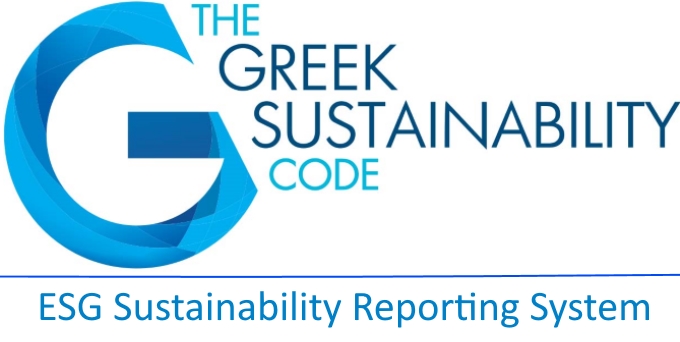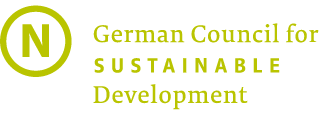LEVEL B
The following table has all the information for selected LEVEL B
PILLAR: STRATEGY
2. Materiality
CRITERIA DESCRIPTION
TOPICS
The Organization discloses what aspects of Sustainable Development & Corporate Responsibility have a significant impact on its operations and how, in its strategy, it takes them into account and systematically addresses them.
- What activities are material to the Organization with regards to Sustainable Development & Corporate Responsibility.
- How you link these activities with regards to social and environmental issues to opportunities and risks.
- The social environment in which the Organization operates and the most pressing challenges in terms of sustainable development & corporate responsibility that arise from it.
INDICATORS
GRI
Not applicable
Not applicable
EFFAS
Not applicable
Not applicable
4. Management of Value Chain
CRITERIA DESCRIPTION
TOPICS
The Organization states what significance aspects of Sustainable Development & Corporate Responsibility have for added value and how deep into the value-added chain the sustainability criteria are verified.
- What the supply chain of the Organization looks like (value chain mapping).
- To what extent the Organization is familiar with the relevant social and environmental problems that occur at each stage.
- How the Organization addresses these problems.
- Whether and how the Organization communicates with its suppliers and business partners about them.
INDICATORS
GRI
Not applicable
Not applicable
EFFAS
Not applicable
Not applicable
PILLAR: PROCEDURES
10. Product Responsibility and Innovation
CRITERIA DESCRIPTION
TOPICS
The Organization discloses how the principles of Sustainable Development, Corporate Responsibility & energy efficiency are taken into consideration with regard to innovations in products and services (e.g. utilization of resources, energy saving and responsible use of products by customers). Likewise, a further statement is made with regard as to how the current and future impact of the key products and services in the value chain and in the product life cycle are assessed.
- Whether, and if yes, how the Organization uses the principles of Sustainable Development & Corporate Responsibility as a driver for innovation of products and services.
- Which procedures are followed to ensure that the Organization will exploit its potential for innovation of products and services.
- Which innovations (products/services) the Organization is currently working on and / or which the Organization wants to address.
- Whether the Organization is cooperating with anyone in this field (e.g. with universities).
- Whether the Organization knows the social and environmental effects of its key products and services and how the Organization determines them.
INDICATORS
GRI
G4-FS11 (report also in accordance with GRI SRS):
Percentage of assets subject to positive and negative environmental or social screening.
G4-FS11 (report also in accordance with GRI SRS):
Percentage of assets subject to positive and negative environmental or social screening.
EFFAS
E13-01:
Improvement rate of product energy efficiency compared to previous year.
V04-12:
Total investments in research on ESG relevant aspects of business as defined by company such as e.g. eco-design, eco-efficient production processes, decreasing impact on biodiversity, improving health and safety conditions of employees or supply chain partners, consulting on integration of ESG aspects in change management, development of products to exploit ESG opportunities etc. in monetary terms, i.e. currency as a percentage of revenue
E13-01:
Improvement rate of product energy efficiency compared to previous year.
V04-12:
Total investments in research on ESG relevant aspects of business as defined by company such as e.g. eco-design, eco-efficient production processes, decreasing impact on biodiversity, improving health and safety conditions of employees or supply chain partners, consulting on integration of ESG aspects in change management, development of products to exploit ESG opportunities etc. in monetary terms, i.e. currency as a percentage of revenue
PILLAR: ENVIRONMENT
13. Climate-relevant emissions
CRITERIA DESCRIPTION
TOPICS
The Organization discloses the GHG emissions in accordance with the Greenhouse Gas (GHG) Protocol or standards based on it and states the goals it has set itself to reduce emissions.
- What is the Organization’s energy consumption.
- Whether the Organization has set reduction targets.
- What the Organization does to achieve these targets.
- Whether the Organization uses renewable energy, and if so, to what extent; if not, whether it plans to do so.
- Which reference figures (methodology, coefficient, base year) the Organization uses for its calculations.
INDICATORS
GRI
SRS-305-1:
Direct (Scope 1) GHG emissions.
SRS-305-2:
Energy indirect (Scope 2) GHG emissions.
SRS-305-3:
Other indirect (Scope 3) GHG emissions.
SRS-305-5:
Reduction of GHG emissions.
SRS-305-1:
Direct (Scope 1) GHG emissions.
SRS-305-2:
Energy indirect (Scope 2) GHG emissions.
SRS-305-3:
Other indirect (Scope 3) GHG emissions.
SRS-305-5:
Reduction of GHG emissions.
EFFAS
E02-01:
GHG emissions, total (Scope 1, 2).
E02-01:
GHG emissions, total (Scope 1, 2).
PILLAR: SOCIETY
19. Initiatives and Political Influence
CRITERIA DESCRIPTION
TOPICS
The Organization discloses, by country, all significant input relating to legislative procedures, all entries in lobby lists, all significant payments of membership fees, all contributions to governments as well as all donations to political parties and politicians.
- Which other organizations/institutions/initiatives the Organization is a member of.
- Which the Organization’s views or those of its industry association are with regard to political influence and how its exerts influence in concrete terms.
- Which criteria the Organization is based on in order to decide which activity/question to support. Which parties the Organization has donated to in the past year, and if so, the amount of the donation(s).
- Which criteria the Organization is based on in order to decide which activity/question to support.
INDICATORS
EFFAS
G01-01:
Contributions to political parties as a percentage of total revenues.
G01-01:
Contributions to political parties as a percentage of total revenues.






